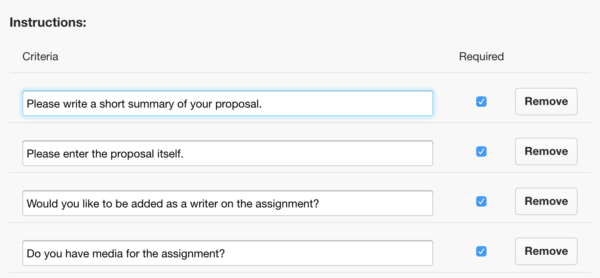Assignment templates
Around one in three of the organizations that use Camayak to manage their editorial workflows have set up assignment templates to save them time and improve the consistency of their submissions.
Are you moving to a model where your reporters are also tasked with submitting their own media with every story they work on? With templates you can also block submissions that don’t include a featured image.
To create your first assignment template, you’ll need to be an admin on your Camayak account.
Pitch templates
Is your newsroom a combination of desks that each focus on their own beat or content type? Using pitch templates, you can support your pitching contributors by making sure they’re giving the editors on each desk exactly what they need to take the next step of approving or rejecting their idea.
If you’re an admin on your Camayak account, go to Templates under the name of your organization in the top right of your screen, then pick the Pitches tab.
Delivery platform logging
Have you ever tried approving an assignment in Camayak and received an email saying that your site couldn’t be reached? While Camayak does its best to make sure you save hours each week by directly publishing your approved content online, every now and again your website might be having a hiccup. This is usually the moment when you try to re-publish a few times, before asking for help from the person or hosting service that handles your website’s technical side. While you wait for a response, you may want to check out the Logs tab on your Publishing destinations page. A scroll through the notifications listed there will give you a good idea of how consistent your platforms are at remaining connected to Camayak.
Metadata on assignments
Ever wanted to make your assignments more searchable when they reach your CMS, include social media messages or set a special URL on the assignment when it becomes a post in WordPress? Admins in Camayak can go to Publishing destinations and Edit metadata on each of your destinations. This allows you to add new fields to your assignments that will get sent to your destinations along with the main content. It’s an opportunity to get more editorial control over aspects like promotion (e.g. on social channels), SEO optimization (for post titles) and other priorities you might have, like storing reporters’ notes for the long-haul.
Talk with your colleagues about how you can get your reporters and editors thinking about leveraging their work to boost the cross-channel publishing you do. It’s time to get more out of the production process they’re already familiar with.


